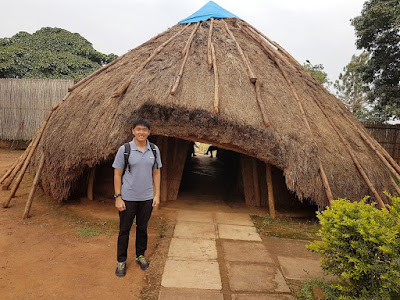Paramaribo, Suriname
Today's post focuses on the historic inner city of Paramaribo, which has been included in the list of UNESCO World Heritage Sites since 2002. The name of the capital city comes from two Tupian words put together:
para (lit. large river) and
maribo (lit. inhabitants).
After shower and breakfast, my BFF and I took a leisurely walk from
Eco Resort Inn to the city's Independence Square.
 |
| Ramada Paramaribo Princess Hotel (4*) has got its own casino. |
 |
| To our disappointment, Palmentuin (lit. Garden of Palms) was closed when we were there. |
 |
| The day before our arrival was a public holiday commemorating the immigration of Hindustani people. |
In my opinion, the Independence Square doesn't look exactly like a square, but one unmissable feature is the colourful flags of various countries flying high.
 |
| We had fun trying to guess which flag belongs to which country. |
 |
| The Presidential Palace of Suriname was originally built in 1730 during the Dutch colonial period. |
Paramaribo is the only city in sparsely-inhabited Suriname, which is home to approximately half of the country's population.
 |
| Navigating through the maze of wooden buildings~ |
 |
| Johannes Nicolaas Helstone (1853 - 1927) was a famed Surinamese composer, pianist and writer. |
Dutch is the most spoken language. Others include Sranantongo, Sarnami Hindustani, Javanese and English.
 |
| Quite a number of shops there are run by Chinese Surinamese. |
 |
| I wonder what those words mean? The one on the far right is "Afro Toon", I think. |
 |
| In 1979, Muhammad Ali visited the very first mosque in Paramaribo that was completed in 1932. |
I don't usually go all out to simply have a drink, but I did go to Zus & Zo to relax over a glass of cocktail made of the locally grown Borgoe rum infused with lemon juice and simple syrup.
I wish I could check out more eateries in Paramaribo. Anyway, hop on to my food blog to check out the following:






























































Comments
Post a Comment